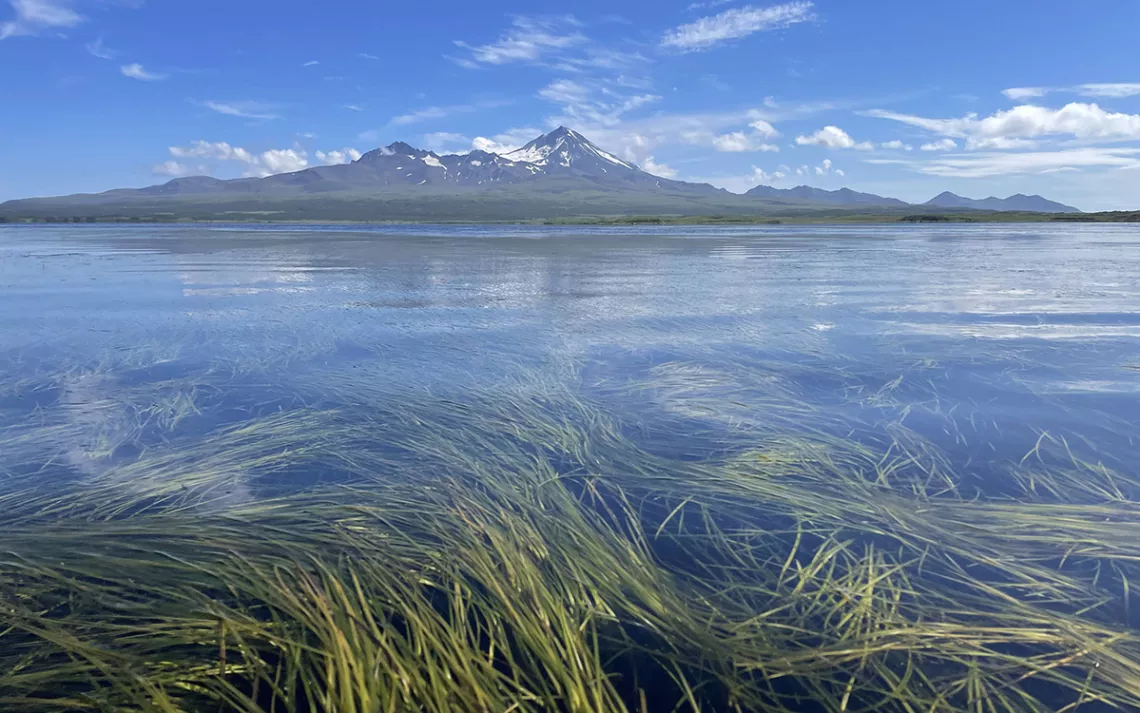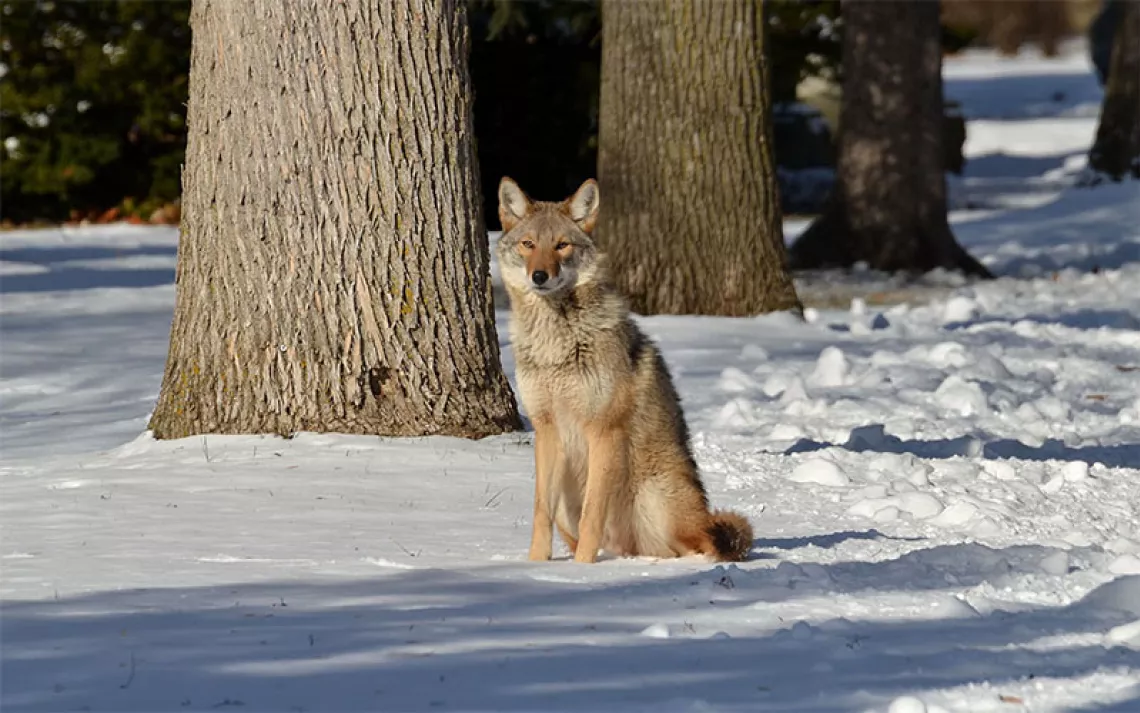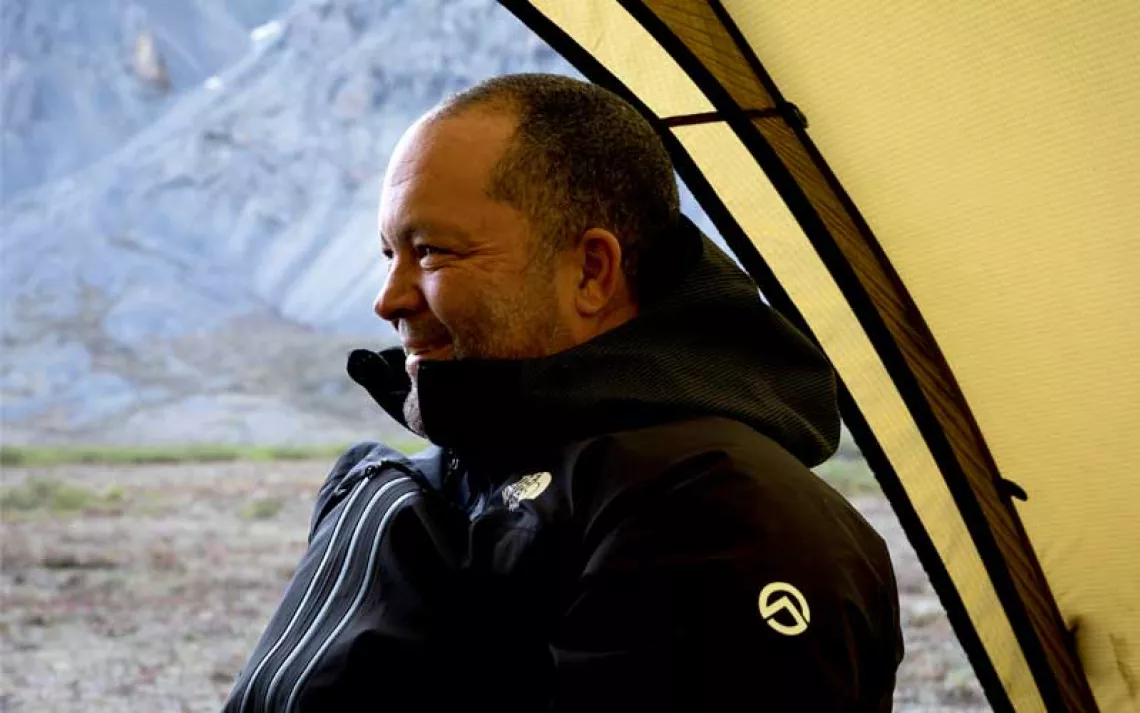America’s Largest Land Protection Law Is Under Threat
How a land swap in Alaska could ruin 40 years of conservation and subsistence practices

Mt. Frosty is reflected in Applegate Cove of Izembek Lagoon, with an eelgrass bed. The photo was taken during an eelgrass distribution and abundance monitoring survey done in collaboration with the USGS Alaska Science Center. | Photo by Alison Williams/US Fish and Wildlife Service
Update: On March 14, the Department of Interior announced that it had rescinded the 2019 land exchange with the King Cove Corporation due to the lack of public input and the failure of the previous administration to consider the environmental impacts. For now, the move protects the Izembek National Refuge and ensures that the Alaska National Interest Lands Conservation Act is used to support subsistence practices and wildlife conservation.
One of the country's largest land protection laws is in danger because of a behind-closed-door deal, done in 2019, between former interior secretary David Bernhardt and an Alaskan Native corporation.
The law under threat is the Alaska National Interest Lands Conservation Act, a piece of legislation passed in 1980 that protects an area roughly the size of California—some 100 million acres of federal public lands—across Alaska. These lands include wilderness areas, national parks, national preserves, national wildlife refuges, and national forests. Commonly called ANILCA, it has provided a haven for animals, plants, waters, and entire ecosystems for decades. It has also safeguarded the subsistence hunting and fishing practices of Alaska Natives.
Now, conservation groups warn, the landmark law is in jeopardy. Here’s how we got here.
For at least three decades, residents in the rural town of King Cove have tried to build a road through a national wildlife refuge by exchanging refuge land for private land. But the US Fish and Wildlife Service, which manages the land, has stated numerous times that severe ecological harm to the refuge wasn’t worth the price of a road through the fragile wetland complex. That government position changed during the Trump administration, which twice tried to push road construction through the Izembek National Wildlife Refuge. But one law stood in the way: ANILCA.
After years of legal seesawing, the fate of the proposed Izembek land exchange is currently before an 11-member panel at the US Court of Appeals for the Ninth Circuit. Environmental attorneys are worried that if the court approves the land exchange, it would render core provisions of ANILCA moot and severely threaten all protected federal public land across Alaska.
“This Bernhardt decision shreds ANILCA,” said Deborah Williams, a lecturer at UC Santa Barbara’s Environmental Studies Department and former attorney for the National Park Service and the US Fish and Wildlife Service in Alaska. “It undermines, in a profoundly injurious way, the two purposes, which are conservation and subsistence.”
Williams explains that when Bernhardt made his deal with the King Cove Corporation, he tried, without a public process or congressional approval, to add a third purpose to ANILCA: addressing the economic needs of the state of Alaska. Environmental groups, including the Sierra Club and eight other groups, represented by attorneys with Trustees for Alaska, responded by filing a lawsuit. The US district court in Alaska agreed with the groups and invalidated the land-exchange agreement. The Trump administration then entered a second land-exchange agreement, which was also ruled illegal by the district court. Undeterred, the Trump administration appealed to a federal circuit court and won before a split three-judge panel, allowing the deal to proceed.
That decision was put on hold last March after conservation groups petitioned the Ninth Circuit Court of Appeals to review the ruling. Former interior secretary Bruce Babbitt and president Jimmy Carter, who signed ANILCA into law, followed up by writing “friend of the court” briefs urging the court to reverse the earlier decision by the three-judge panel. Last November, the court granted the motion for another review and appointed an 11-judge panel to examine the case.
“Congress is the body that is supposed to designate these conservation areas,” said Bridget Psarianos, a senior staff attorney with Trustees for Alaska. “The concern here is with the way the split three-judge panel found that the secretary [of the Interior Department] could exchange lands for a really broad array of reasons, which essentially would give the secretary the ability to override Congress.”
The land in question is a 12-mile parcel along an isthmus on the Alaskan Peninsula—the long tail of land that stretches for nearly 500 miles from the Alaskan mainland toward the Aleutian Islands. It is one of the remotest areas in the country. Grizzly bears and caribou range across the nearly 308,000 acres that make up the area, and threatened Steller’s eiders and the entire population of Pacific brant migrate to its slender shores and intact wetlands.
The Trump administration, state leaders, and the Alaskan Native Corporation for King Cove have argued that a road is needed to medevac people from King Cove to Cold Bay, another town on the opposite side of the wildlife refuge where an airstrip allows transport to Anchorage. But many advocates say that the purported need for health and safety belies the true meaning of the road: to facilitate the area’s commercial fish harvest.
When the road was first proposed, the King Cove Corporation was clear about its intent. The corporation wanted to build a road to move salmon from Peter Pan Seafoods, the country’s largest salmon cannery, to Cold Bay, which would also allow quicker access to Asian markets. However, that reasoning didn’t get much traction as a justifiable reason for bulldozing through the Izembek National Wildlife Refuge and trading away public land. What did resonate was sick people needing care. Sensing an opportunity, road advocates began to pit people against public lands.
Yet even this argument failed when stress-tested. In 2013, a decision put out by Sally Jewel, President Obama’s second-term interior secretary, identified several alternatives to a road and stated that building one would come with significant risk to both wildlife and the environment. Dr. Peter Mjos, the medical director for the Eastern Aleutian Tribes for over a decade, said that transporting patients via road would be much more dangerous than a ferry or fixed-wing airplane—both of which were identified as alternatives.
“In the winter, you’ll have freezing rain, probably glazed roads,” Mjos told Sierra. “There's at least one area which is highly prone to avalanche and serious drifting. The thought that any vehicle could get through there is an impossibility.”
If this case goes through, Mjos and conservation groups worry that any future administration would use this example as a template to log the Tongass National Forest, mine in Denali National Preserve, or build roads through the Yukon Delta National Wildlife Refuge to drill for oil and gas.
According to many people who have followed this issue for years, that’s the very reason why public lands foes have been so determined on pushing this land exchange. If it’s allowed, David Raskin, president of the Friends of Alaska National Wildlife Refuges, said this would be the first of many bad-faith decisions that erode public land protections in Alaska.
“It’s the first time an ANILCA land exchange has been used to build a road through wilderness,” Raskin said. “That’s never happened, and so that is a huge precedent.”
While the appellate court’s upcoming decision has environmentalists on edge, a lasting solution appears to be pretty straightforward. Interior Secretary Deb Haaland could just rescind the Bernhardt order. The National Wildlife Refuge Association, Defenders of Wildlife, and the Audubon Society are asking their members and supporters to write to the Biden administration to urge them to do just that. If the current administration allows the land exchange to go through, it will fly in the face of many of President Biden’s political promises to advance tribal participation, foster land conservation, and address the biodiversity crisis.
“We have the opportunity, and the imperative, to protect over 100 million acres of national public lands for their conservation and Alaska Native subsistence values by insisting that the Biden Administration rescind the Trump-Bernhardt Izembek land exchange,” Williams said. “The Sierra Club was instrumental to the passage of ANILCA. Now we can and must protect it.”
 The Magazine of The Sierra Club
The Magazine of The Sierra Club



